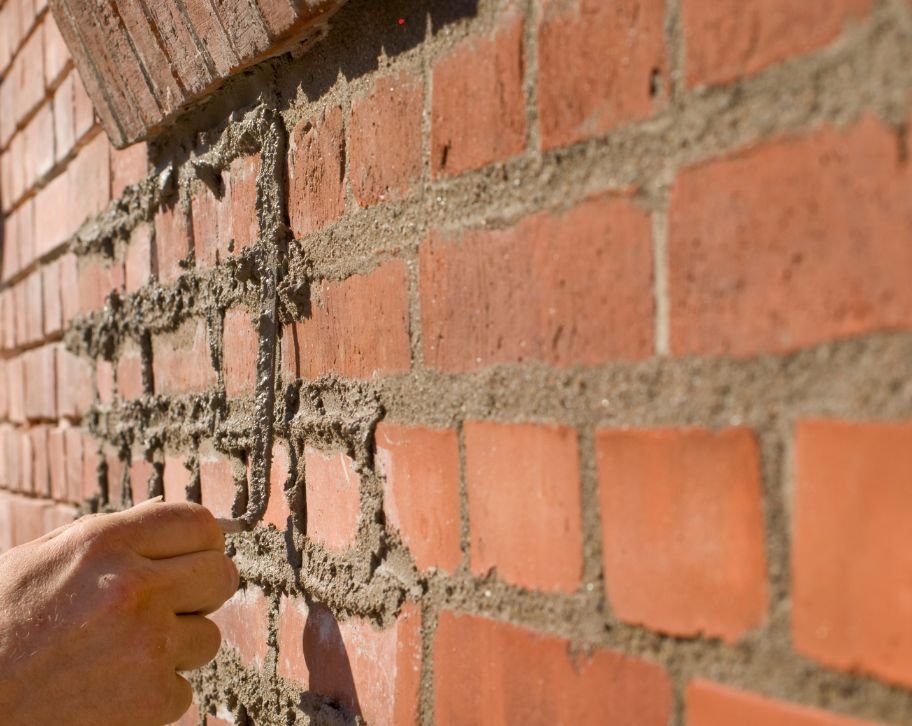Bricks don’t complain, but their mortar sure does. If you’re seeing gaps or dust, your Fredericton home might be due for repointing. Your brick home faces constant battles against weather, time, and environmental stress, with mortar joints serving as the first line of defense.
Understanding when to repoint your brick home isn’t just about following a calendar – it’s about reading the signs. Generally, homes need repointing every 25-50 years, but local conditions in Fredericton might necessitate more frequent attention.

You might notice your brick house showing signs of wear, especially in those spaces between the bricks. That’s where repointing comes in – it’s the process of removing old mortar and replacing it with fresh mortar between the bricks of your house.
Think of mortar joints as the unsung heroes of your brick walls. They work like natural glue, keeping your brickwork strong and preventing water from sneaking behind your walls. Without proper mortar, your brick structure could face serious problems.
Water damage is sneaky – it starts small but can lead to big headaches. When old mortar deteriorates, moisture finds its way in, causing structural brick repair needs and even mold growth. This is especially true for older homes built before 1930, where the original mortar wasn’t as durable as today’s materials.
Keep an eye on your mortar joints between bricks. Regular maintenance and timely brick mortar repair can save you from costly masonry restoration down the road. Your home’s longevity depends on catching these issues early.
The choice of mortar significantly impacts repointing frequency. Lime-based mortars, while more breathable and traditional, require more frequent maintenance with a lifespan of 20-30 years.
In contrast, cement-based mortars offer extended durability, lasting over 50 years. However, it’s crucial to note that using cement mortar on older buildings can be detrimental, as it may trap moisture and cause brick damage.
Environmental factors play a vital role in determining repointing intervals. Properties in New Brunswick experiencing severe weather patterns, particularly those with frequent freeze-thaw cycles, face accelerated mortar deterioration.
Constant exposure to moisture, extreme temperature fluctuations, and heavy rainfall can compromise mortar integrity faster. Regular inspections become essential in these areas to prevent extensive damage.
The orientation of your walls directly affects mortar longevity. South-facing walls are particularly vulnerable due to intense UV exposure throughout the day. This continuous sun exposure leads to more rapid deterioration of mortar joints compared to walls facing other directions. The combination of heat and UV rays can cause the mortar to crack and crumble more quickly.
The initial installation quality dramatically influences how long mortar joints will last. Professional, well-executed pointing work using properly mixed mortar can maintain its integrity for decades.
Poor workmanship, including incorrect mortar mixing ratios or improper application techniques, often results in premature failure. This emphasizes the importance of hiring skilled professionals for initial pointing work.
The age of your property is a crucial factor in determining repointing frequency. Older homes, particularly those constructed before 1930, typically require more frequent attention, usually every 25-30 years.
Modern buildings benefit from advanced construction techniques and materials, often extending the repointing interval to 50-100 years. Regular assessment becomes more critical as buildings age.
Selecting appropriate mortar is a key for successful repointing. Using new mortar that’s too hard can cause bricks to crack and deteriorate, while overly soft mortar will break down quickly. Getting the right match is essential for long-lasting results.
To identify your original mortar type, examine its color, texture, and conduct simple hardness tests. This assessment helps ensure you select a compatible replacement that won’t damage your existing brickwork.
For historic buildings, Natural Hydraulic Lime (NHL) mortar is often the best choice. Its breathable and flexible properties protect old bricks while maintaining structural integrity.
When dealing with localized damage, tuckpointing might suffice instead of complete repointing. This targeted approach repairs specific damaged areas, saving time and money while preserving the wall’s integrity.
Winter’s freeze-thaw cycles in New Brusnwick pose a significant threat to mortar integrity, causing rapid deterioration as water expands and contracts within the joints. This process can accelerate the need for repointing significantly.
The ideal time for brick repointing in Fredericton, NB is during spring or fall when temperatures are mild and conditions are dry. These seasons provide optimal conditions for proper mortar curing.
Climate change has introduced new challenges, with increased storm frequency in region requiring more regular inspections and potentially more frequent repointing schedules.
Are your bricks showing signs of wear and tear? Let Atlantic Brick and Stone’s experienced team assess your home’s masonry condition. Our skilled masons provide top-tier repointing services backed by our craftsmanship warranty.
Don’t let deteriorating mortar compromise your home’s structural integrity. Our professional team is just a call away, ready to deliver exceptional results that protect your investment. Contact us now for a thorough evaluation and expert repointing solutions.
If you neglect to repoint brickwork, water can penetrate, causing dampness and efflorescence, which accelerates the deterioration of both mortar and bricks. This compromises the wall’s structural integrity, leading to costly repairs. Ultimately, it can also damage interior finishes like plaster and wood.
Small repairs might be DIY-friendly, but for full repointing, it’s best to hire a masonry repair contractor to ensure durability and proper technique.
A full repointing job may take a few days to a few weeks, depending on the size and condition of the wall.
Not exactly. Tuckpointing is a decorative technique that uses contrasting colors to imitate fine joints, while repointing focuses on structural repair.
GET STARTED
Create stunning structures with our residential and commercial masonry services in Fredericton. From meticulous designs to the completed build, our process is professional and rewarding, and we can’t wait to build your dream with you.
Atlantic Brick and Stone, one of the best masonry contractors in Fredericton, NB
Contact
8 Muskie Street, Lower Kingsclear, New Brunswick E3E 0E7, Canada